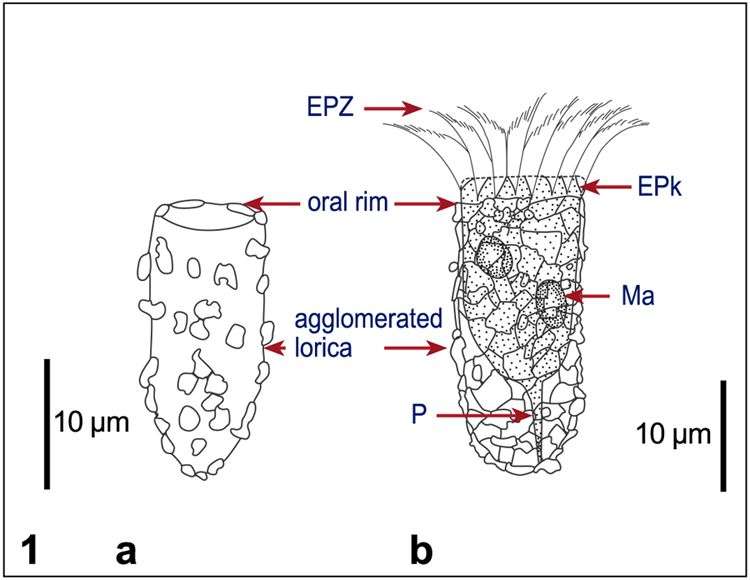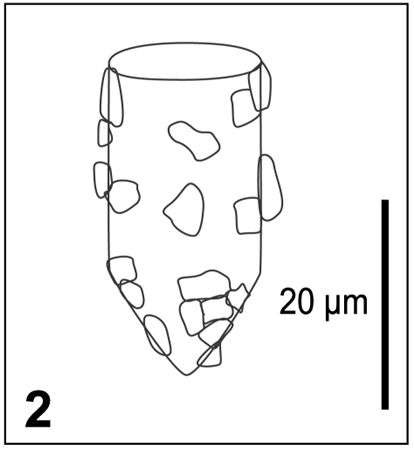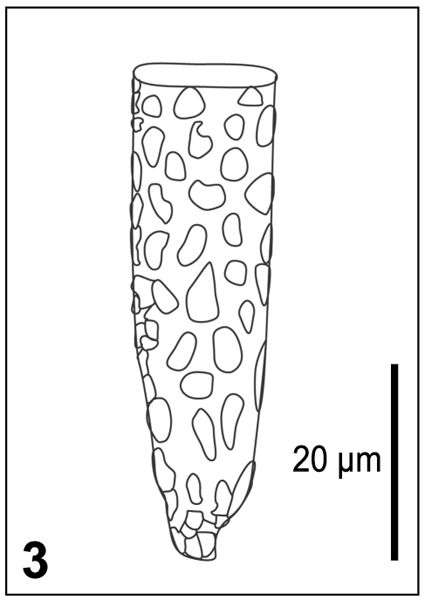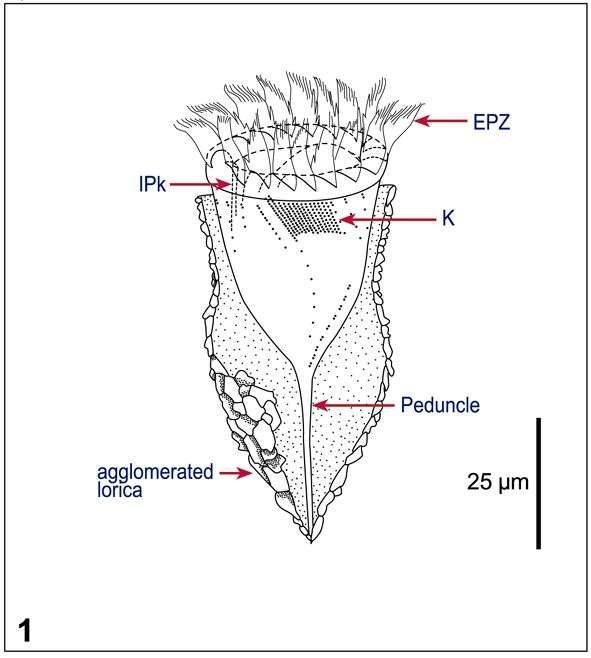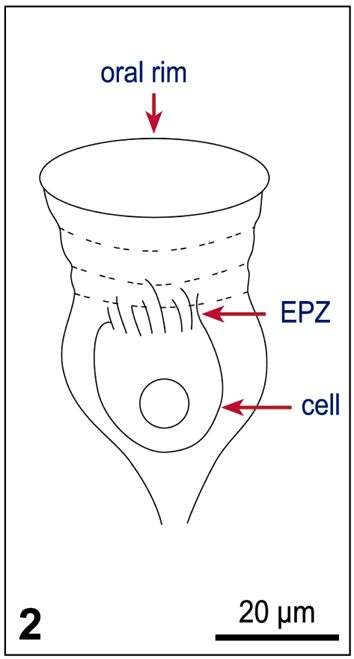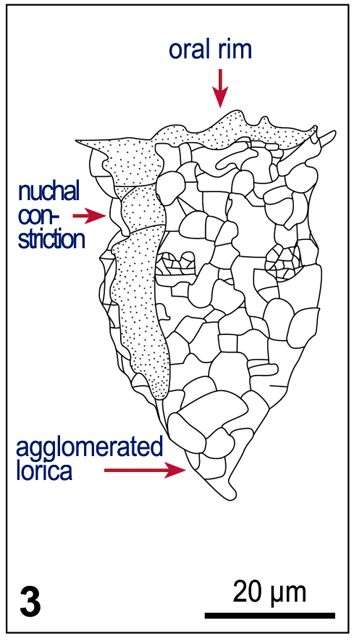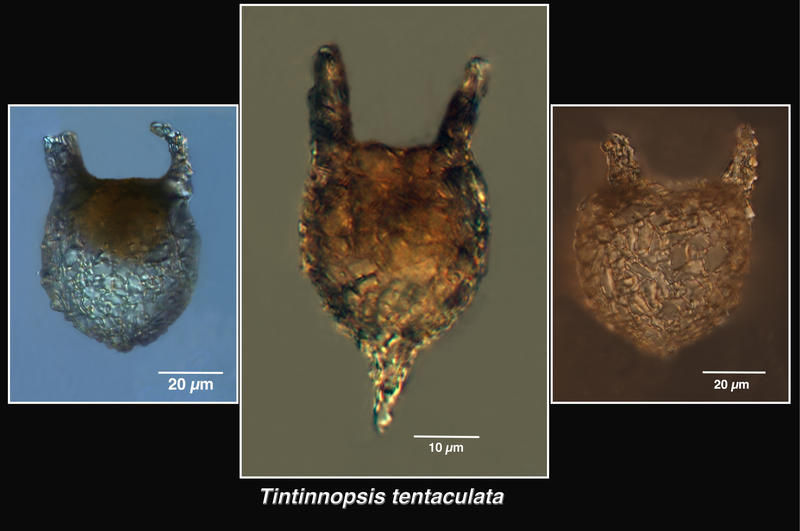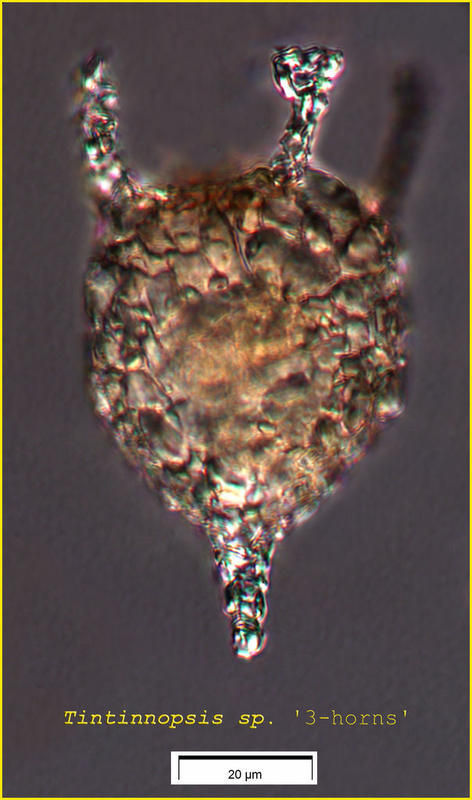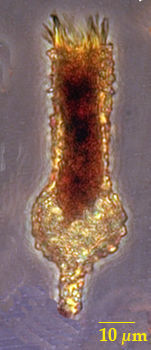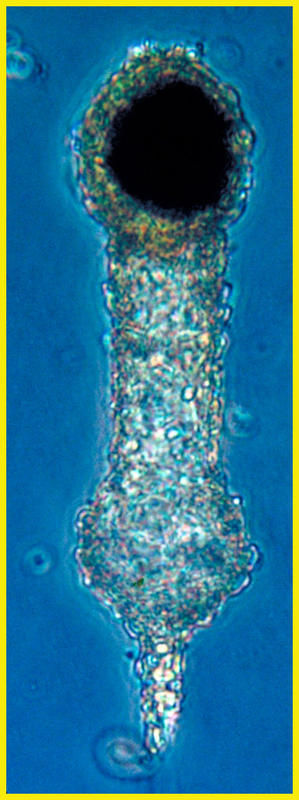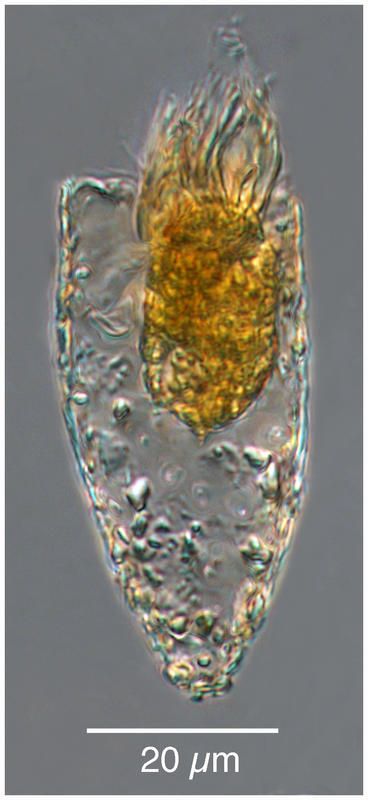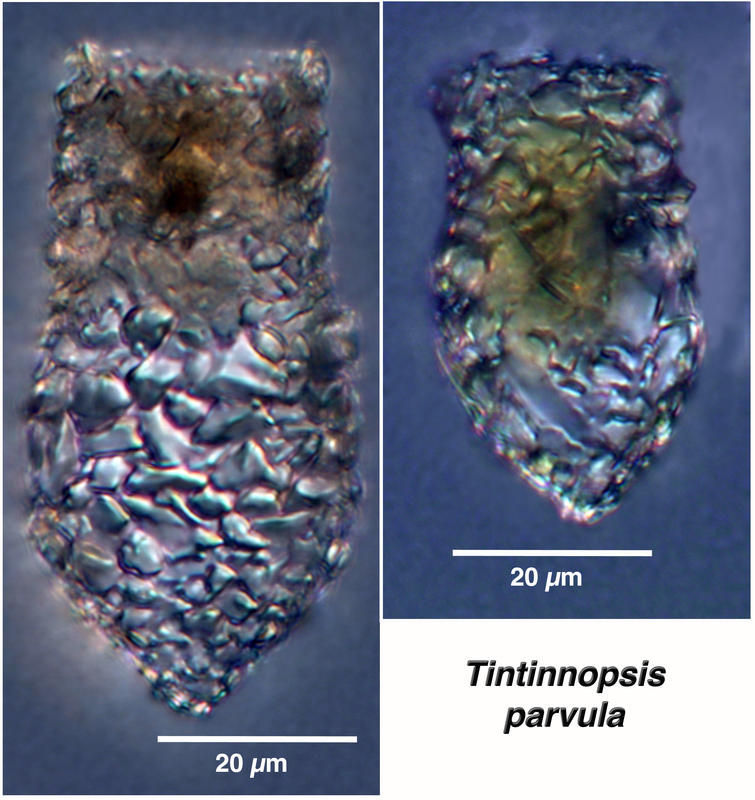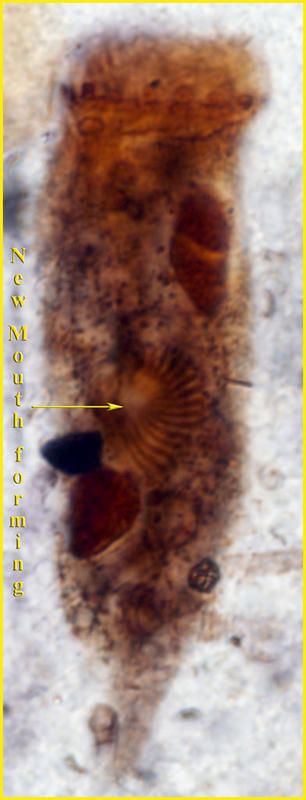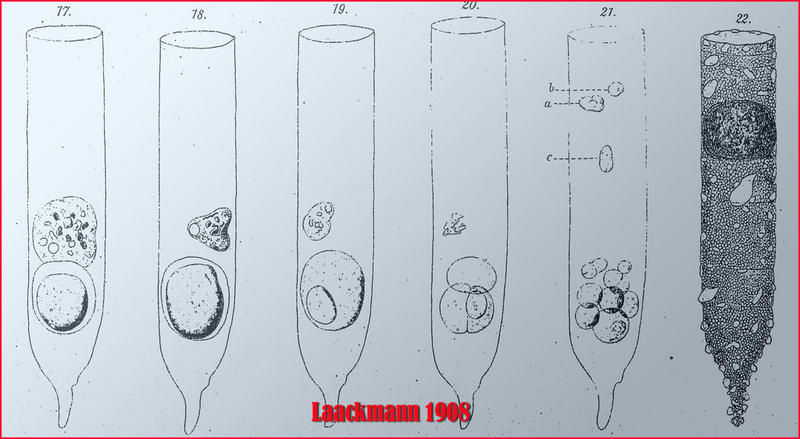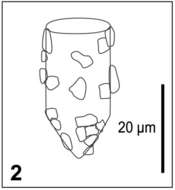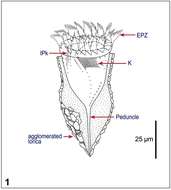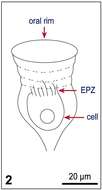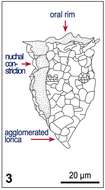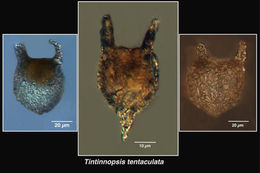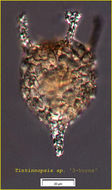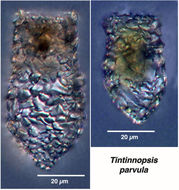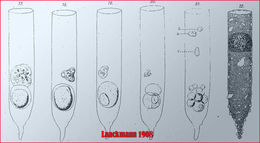-
Fig 1: Tintinnopsis nana Line drawings a: Original drawing from Lohmann,1908; b. Drawing from a Lugol?s fixed specimen.
-
Tintinnopsis davidoffi.
-
Fig 2: Tintinnopsis nana - Schematic drawing of lorica morphology, after Kofoid & Campbell, 1929
-
Fig 3: Tintinnopsis nana - Schematic drawing of lorica morphology, after Marshall, 1969
-
Fig 4: Tintinnopsis nana - Lugol?s fixed cell, lateral view, lorica morphology.
-
Fig 1: Tintinnopsis baltica Schematic drawings of lorica morphologie: After Laval-Peuto & Brownlee 1986;
-
Fig 2 Original drawing of Tintinnopsis baltica (after Möbius, 1887);
-
Fig 3 After Kofoid & Campbell 1929.
-
Tintinnopsis tentaculata specimens from the Ganges River estuary.
-
From an Indian mangrove system. All the specimens had 2 or 3 horns. The species was described by Nie & Cheng in 1947 from coastal waters of China as having 5 or 6 projections.
-
-
Specimen from the Chesapeake Bay.
-
From an Indian mangrove wetland
-
Tintinnopsis rapa from the Canada Basin in the Arctic
-
Tintinnopsis parvula. Specimens from the Ganges River estuary.
-
Tintinnopsis radix from Pt B in the Bay of Villefranche. Specimen collected July 8 2013 and fixed with Lugol's; Z-stack of images made using a 20x objective and DIC optics.
-
-
Lugol's-fixed specimen from the Bay of Vilefranche in Sept 2010. Images taken using a 20x objective and compiled with Helico Focus
-
Lugol's-fixed specimen from the bay of Villefranche in Jan 2011.
-
Lugol's-fixed specimen from the Bay of Villefranche in Jan 2011.
-
Lugol's-fixed specimen from Pt B in Villefranche in December 2010.
-
Tintinnopsis radix FRom the Ganges River, estuarine portion (st ganga) in Jan 2013
-
This is an early stage of cell division in which the daughter cell is being formed with the development of a new mouth. The cell is an Protargol preparation of a sample from the Chesapeake Bay in 1987.
-
Parasites were mistaken for cysts, spores, embryos and gametes in early studies. The Laackmann 1908 paper is available on the Aquaparadox site on the page 'Classic Monographs'.


